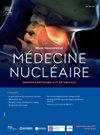实体肿瘤形态学成像(RECIST)治疗反应评估:创新疗法标准的历史、应用和适应
IF 0.2
4区 医学
Q4 PATHOLOGY
Medecine Nucleaire-Imagerie Fonctionnelle et Metabolique
Pub Date : 2024-12-01
DOI:10.1016/j.mednuc.2024.10.009
引用次数: 0
摘要
实体肿瘤形态学成像治疗反应的评价主要基于2000年建立的RECIST标准(实体肿瘤反应评价标准),并于2009年修订为RECIST 1.1版本。这些标准使得通过计算机断层扫描(CT)或磁共振成像(MRI)测量肿瘤病变来分析抗癌治疗的疗效。目标和非目标病变的选择对于在治疗前建立基线检查至关重要,以便监测疾病进展。结果分为部分缓解、完全缓解、病情稳定和病情进展4类。随着免疫疗法的出现,对标准的适应是必要的,导致2017年创建了iRECIST,该标准考虑了假性进展现象。此外,还发现了RECIST 1.1标准的其他局限性,特别是它们无法评估肿瘤的功能变化,这导致了针对特定类型癌症的替代标准的发展,如mRECIST和CHOI。这些发展强调了准确和适当的肿瘤治疗评估的重要性。本文章由计算机程序翻译,如有差异,请以英文原文为准。
Évaluation de la réponse thérapeutique en imagerie morphologique des tumeurs solides (RECIST) : historique, application et adaptation des critères aux thérapies innovantes
The evaluation of therapeutic response in morphological imaging of solid tumors is based primarily on the RECIST criteria (Response Evaluation Criteria in Solid Tumours) established in 2000 and revised in 2009 to version RECIST 1.1. These criteria enable the efficacy of anti-cancer treatments to be analyzed on the basis of the measurement of tumor lesions by computed tomography (CT) or magnetic resonance imaging (MRI). The choice of target and non-target lesions is crucial for establishing a baseline examination prior to treatment, in order to monitor disease progression. Results are classified into 4 categories: partial response, complete response, stable disease and progressive disease. With the emergence of immunotherapy, adaptations to the criteria were necessary, leading to the creation of iRECIST in 2017, which takes into account the phenomenon of pseudoprogression. In addition, other limitations of the RECIST 1.1 criteria have been identified, notably their inability to assess functional changes in tumors, leading to the development of alternative criteria such as mRECIST and CHOI for specific types of cancer. These developments underline the importance of accurate and appropriate treatment evaluation in oncology.
求助全文
通过发布文献求助,成功后即可免费获取论文全文。
去求助
来源期刊
CiteScore
0.30
自引率
0.00%
发文量
160
审稿时长
19.8 weeks
期刊介绍:
Le but de Médecine nucléaire - Imagerie fonctionnelle et métabolique est de fournir une plate-forme d''échange d''informations cliniques et scientifiques pour la communauté francophone de médecine nucléaire, et de constituer une expérience pédagogique de la rédaction médicale en conformité avec les normes internationales.

 求助内容:
求助内容: 应助结果提醒方式:
应助结果提醒方式:


